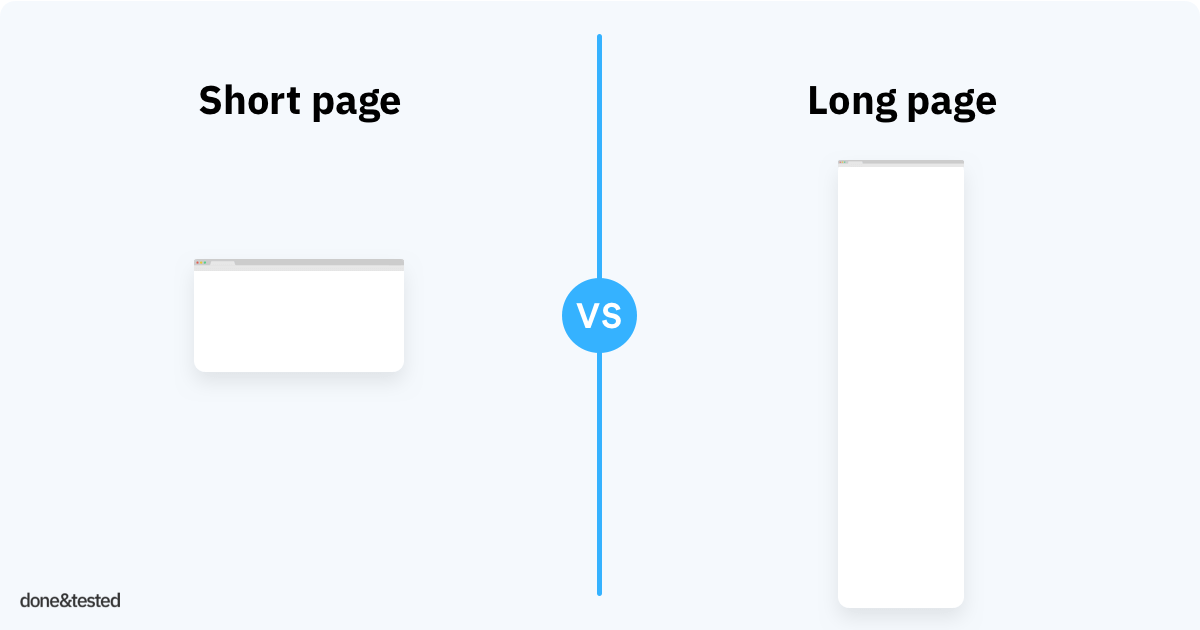
Page length can be a tricky thing to nail. Make it too short, and you won’t be able to fit on all the information you want to share. Make it too long, and users may grow bored and leave prematurely.
The trick is to adjust your page length based on how far someone has gone down the awareness funnel.
Are they still just exploring your product, or are they one click away from purchasing? The earlier they are in the funnel, the more information a page needs to have.
If a user is still at the beginning of awareness funnel, they probably still need to be informed about what the product is, its benefits, your key selling points, e.g. In this case, it’s OK if the page is a little longer, as you still need to convey all of your information.
If they’re further down the awareness funnel and about to make a purchase, there shouldn’t be anything on the page that can distract the user from finishing his or her purchase. At this point, they clearly already decided they want to buy the product. Your focus (and thus the focus of your page) should then be completely on getting them to finish that purchase. If a page element doesn’t contribute to that, it may be better to remove.
Really, the best way to determine the best page length, is to think about how aware your visitor is of their problem – and your product – when they visit your page for the first time. The more familiar someone is with your product, the less information you need to convey on your page, and thus the shorter your page can be.
Be notified when I publish a new CRO tip:
Each week I share a conversion rate optimization (CRO) tip or insight I love - or just blows my mind. Would you like to share a tip as well? Drop me an email here.
All tips are meant as inspiration and I recommend split-testing them; they might not work for your site' audience. Done&Tested is curated by Gijs Wierda, a freelance CRO specialist.